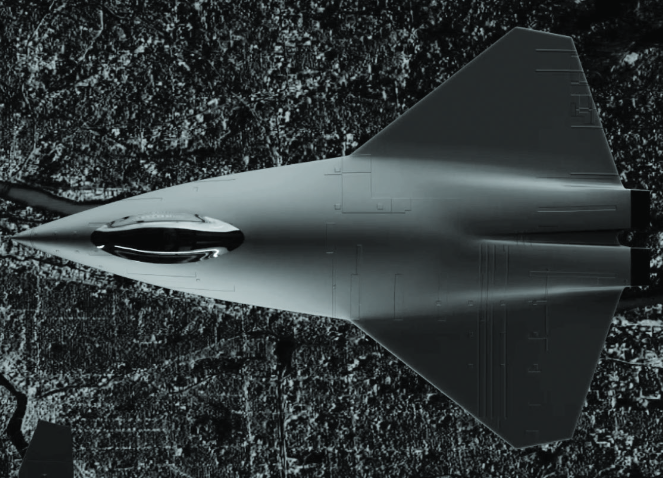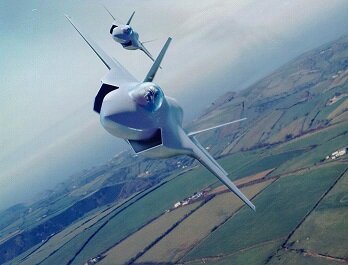I personally like the Lockheed NGTF and Rodrigo Avella’s “Manitou” concept the best, and then I remain a big fan of the YF-23 RTA as well.
(While I’m a Raptor fan, I kinda have a thing for the Black Widow…)
Configurationally, though, it’s pretty tough to say. Most of the key sixth-gen technologies we know about (big data, multispectral imaging, adaptive engines, manned-unmanned teaming, electronic attack, AI, maybe hypersonic munitions someday, maybe directed energy defenses against incoming missiles someday) don’t have any straightforward, obvious implications for the general shape of the aircraft. Outside of rudiments like twr, lift/drag, wing loading, x-band signature, or the area rule, the greater importance of thermal signature management and low frequency radar signature are probably the main things driving shape, and a flat shape with a good mixing of exhaust air is probably best from a signature standpoint.
This is where I think Rodrigo’s Manitou is interesting. It’s tailless for (presumably) subsonic cruise, and maybe even for static supercruise, but it has recessed, deployable fold-up control surfaces for times when your signature management has failed and you want maneuver kinematics instead, especially supersonically. I kind of doubt the practicality of this vs just having a butterfly/pelikan type tail, but it is intriguing. For people eager to interpret statements about the NGAD program setting records as being about aircraft performance rather than just about the schedule and design process, it offers an answer: supersonic tailless flight.
Concept for a next generation air dominance. NGAD - FX - F/A-XX - STEALTH - GCAP - FCAS - SCAF - FSAC - GLOBAL COMBAT AIR PROGRAMME - FUTURE COMBAT AIR SYSTEM - UCAV - UAV - USAF - NAVY - DRONE

rodrigoavella.com
Obviously, supersonic tailless flight might be possible with just an X-36 like configuration. But maximum intensity dogfighting with no tail at supersonic speeds would be a giant step even beyond that. Manitou offers an exciting compromise that theoretically might let you have your cake and eat it too.
That said, if I had to bet, I would vote for Lockheed’s NGTF as probably the most likely template. I don’t feel like I have a good sense of how big the aircraft needs to be, because I don’t know what its range is supposed to be, but NGTF is my choice. I know we are now in an era where real concepts are not shared with the public as freely as they were in the Cold War or the 90s, and that comparison to those eras is more likely to lead to overconfidence than knowledge, but NGTF seems like the most practical thing I have to go on.








